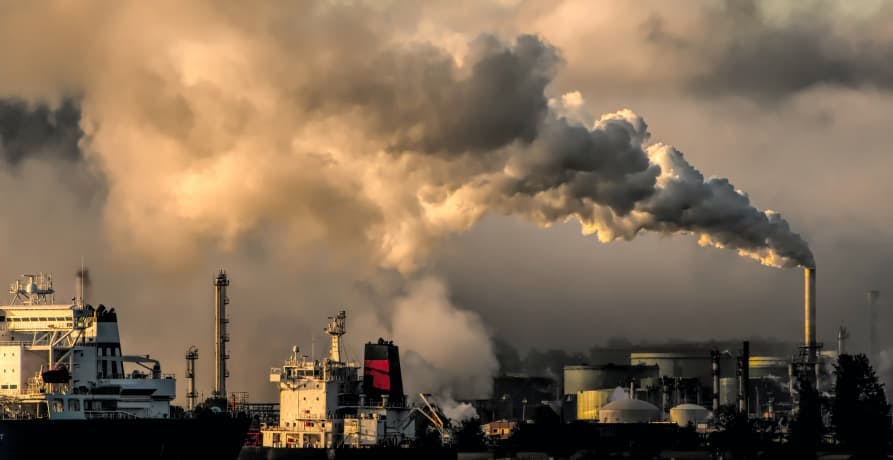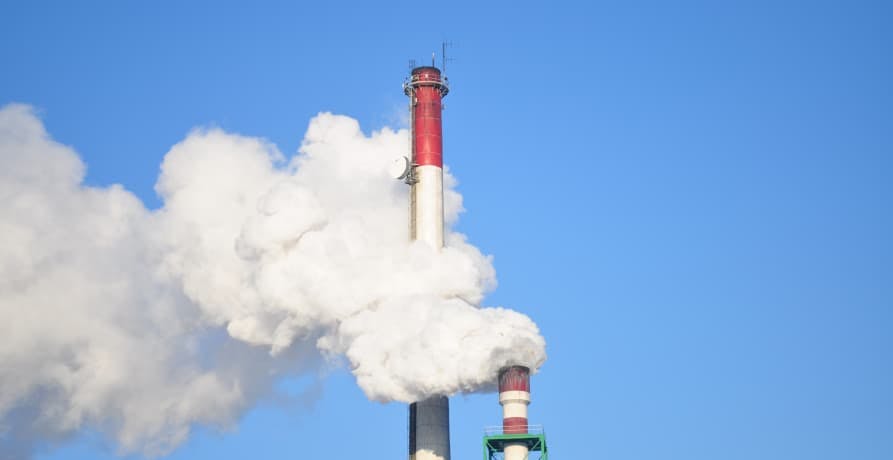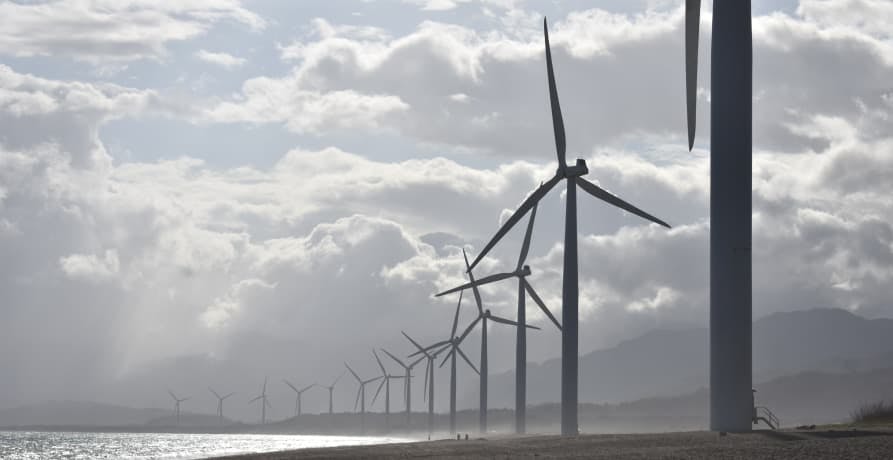Are Oceans Turning Green Because of Climate Change?
In this article, we’ll explore the reasons behind the changing colors of the oceans, discuss what this means for marine life, and determine how these shifts reflect larger environmental changes.
Your request has been taken into account.
An email has just been sent to you with a link to download the resource :)

In an era marked by urgent climate concerns, the term "carbon bombs" has emerged as a chilling descriptor of one of the most formidable challenges facing our planet. These 425 carbon bombs, a mix of mammoth oil and gas projects and coal mines scattered globally, stand as ticking time bombs in the race against climate change. If allowed to reach their full operational potential, these projects threaten to unleash an unprecedented amount of carbon dioxide into the atmosphere, exacerbating global warming and pushing our delicate ecological balance to the brink.
As the world grapples with the necessity of transitioning to sustainable energy sources, the immediate need to diffuse these carbon bombs becomes not just a matter of environmental preservation but a pivotal battle for the future of life on Earth.
👉 This article delves into the intricacies of these carbon bombs, exploring their locations, impacts, and the critical steps needed to avert this looming ecological disaster.
The term carbon bomb refers to large-scale fossil fuel extraction projects that, if developed to their full capacity, have the potential to release massive amounts of carbon dioxide into the atmosphere, significantly contributing to global warming and climate change. These carbon bombs are composed of:
As our planet already faces severe environmental challenges, these 425 infrastructures, if fully exploited, could release an astonishing 1,000 gigatons of carbon dioxide over their lifetime. According to experts these potential emissions represent an amount that is four times higher than the global carbon budget needed to limit global warming to +1.5°C above pre-industrial levels!
The global landscape of these carbon bombs presents a stark reality in the ongoing struggle against climate change. Presently, many of these projects are either in development or already operational contributing significantly to the world's carbon emissions. The International Energy Agency (IEA) has highlighted in its reports that, despite a growing shift towards renewable energy sources, the global demand for oil and gas remains substantial, driven primarily by developing economies seeking to meet their rising energy needs. This continued reliance on fossil fuels poses a significant challenge to achieving the carbon reduction targets set under the Paris Agreement.
In particular, the oil and gas sector, encompassing 195 of these projects, is a major contributor to global greenhouse gas emissions. According to the IEA's oil report, while there is a potential plateau in oil demand in the 2030s, the pace of transition to alternative energy sources is crucial in determining the future trajectory of these emissions.
As for the 230 coal mines, their impact on global emissions cannot be understated. Despite the global push for cleaner energy, coal remains a dominant energy source, especially in regions like Asia where new coal mines continue to be developed to meet rising energy demands. The Global Energy Monitor's 'Global Coal Plant Tracker' provides an insight into the scale of existing and planned coal-based power plants, underlining the immense challenge of phasing out coal to meet climate objectives.
👉 Learn more about the role of fossil fuels in the global energy landscape on our blog.
The implications of these carbon bombs are far-reaching. Not only do their fossil fuel emissions pose a direct threat to achieving global warming targets, but their operation also impacts local ecosystems, air quality, and the health of communities living in proximity to these sites. The transition away from these carbon-intensive projects is a complex interplay of economic, political, and social factors, requiring concerted efforts from governments, industry, and civil society to steer the world towards a more sustainable and low-carbon future.
These carbon bombs represent some of the world's biggest fossil fuel projects. Their distribution spans across a number of different countries:
For instance, China, leading the count with 141 carbon bomb projects, has been heavily reliant on coal and is rapidly expanding in oil and gas to fuel its massive economic growth. Russia, with its vast natural gas reserves, has 41 projects and is utilizing these resources as a major economic driver and a tool for geopolitical influence. Similarly, countries like Iran, the United States, Australia, and Saudi Arabia, each with their unique energy landscapes, have developed numerous projects aligned with their abundant natural resource reserves.
This distribution of these carbon bombs also indicates the varying stages of economic development and energy transition policies in these countries. While some nations are investing heavily in renewable energy (like the United States and Australia), their reliance on existing fossil fuel infrastructure and the profitability of these resources make the transition complex.
In contrast, developing countries such as India and China face the dual challenge of meeting rapidly increasing energy demands while attempting to shift towards more sustainable practices.
The presence of these carbon bombs in these diverse geopolitical contexts highlights the global nature of the climate crisis, underscoring the need for international cooperation in managing and mitigating the impacts of these projects. It's a stark reminder that addressing climate change effectively requires a nuanced understanding of global energy politics, economic development, and the equitable distribution of resources and responsibilities.
👉 Discover why petrostates have become so dependent on oil and gas in our article.

The responsibility for the 425 climate bombs can be attributed to a variety of actors in the global energy landscape, each playing a significant role in their development and continued operation. Understanding who is behind these projects is crucial for addressing the challenges they present. Let's take a closer look at those responsible for these ticking carbon bombs:
In addressing the challenge of carbon bombs, it is essential to consider the roles and responsibilities of these various actors. Effective solutions will likely require coordinated efforts across these groups, including stricter regulations, shifting financial investments toward renewable energies, and reducing global reliance on fossil fuels.

The struggle to move away from coal, oil, and gas projects is deeply rooted in a complex web of economic, infrastructural, and geopolitical factors. At the forefront is the issue of profit: fossil fuels have been the backbone of industrial development and economic growth for over a century. Major oil and gas companies, as well as coal-producing nations, have built vast infrastructures and supply chains centered around these resources. This established infrastructure makes a swift transition challenging, as it involves not only the development of new technologies but also a fundamental restructuring of the global energy economy. Furthermore, investments in fossil fuel projects are often locked in for decades, creating a situation where short-term economic interests can overshadow long-term environmental considerations.
Additionally, the dilemma intensifies in the context of developing nations. Many of these countries are experiencing rapid growth and are seeking to improve living standards for their populations, akin to the development trajectories of more industrialized nations. However, they often face constraints in resources and technology to switch to renewable energy quickly. The reliance on affordable and readily available fossil fuels becomes a pragmatic choice for immediate economic development and energy access. These countries contend with the challenge of balancing their right to develop with the global need to reduce carbon emissions.
Addressing the issue of carbon bombs calls for a collaborative approach, where developed countries not only lead the way in transitioning to renewable energy but also support developing nations through technology transfer, financial aid, and investment in sustainable infrastructure. The global nature of climate change necessitates a unified effort that recognizes the different capacities and developmental stages of countries, ensuring a just and equitable transition for all.
👉 Read more about the challenge of transitioning away from fossil fuels in our article.

Mitigating the damage caused by the 425 carbon bombs requires a multifaceted approach, encompassing a range of strategies aimed at reducing carbon emissions and transitioning to more sustainable energy sources. Here are several key strategies:
Addressing the issue of the 425 carbon bombs uncovers a significant truth about the current state of our global energy systems and highlights the critical necessity for transformative change. These vast, carbon-intensive projects not only symbolize the challenges we face in curbing climate change but also serve as a call to action for societies worldwide.
The road to mitigating their impact is multifaceted, requiring not just technological innovation and policy shifts but also a fundamental change in how we perceive and utilize energy. It's about reimagining our relationship with the planet, transitioning from an era of exploitation to one of sustainable coexistence.
The task ahead is challenging, yet it's essential. It demands collective resolve and swift action to ensure a habitable, thriving Earth for future generations.
At Greenly we can help you to assess your company’s carbon footprint, and then give you the tools you need to cut down on emissions. Why not request a free demo with one of our experts - no obligation or commitment required.
If reading this article has inspired you to consider your company’s own carbon footprint, Greenly can help. Learn more about Greenly’s carbon management platform here.


We review the green news once a month (or more if we find interesting things to tell you)